Most Important Goddess Of Prachi Valley: Param Vaishnavi Maa Mangala

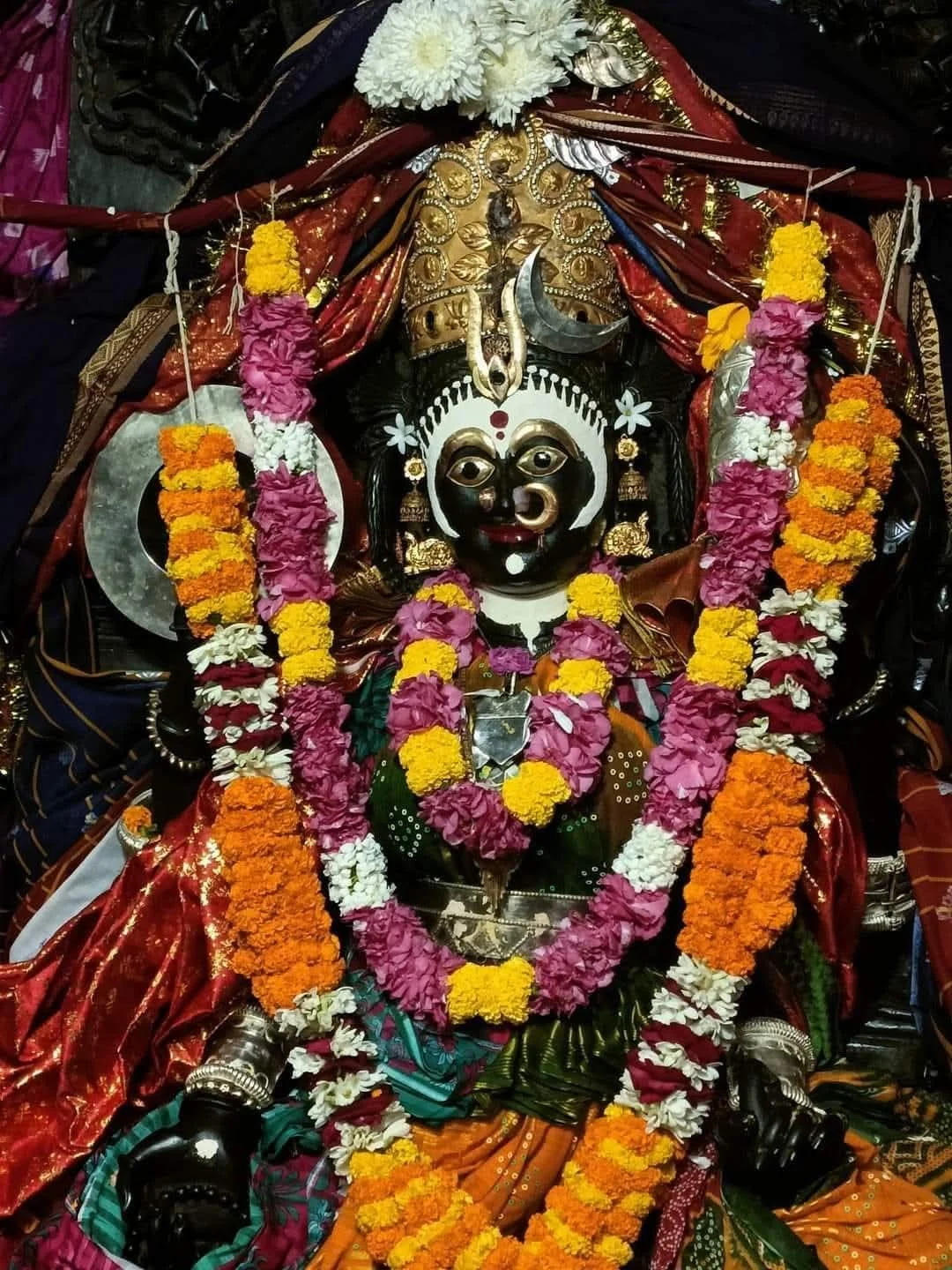
This is the shrine of Param Vaishnavi Maa Mangala at Kakatpur on the bank of the river Prachi in Puri district. Among the 8 traditional shakti shrines of Odisha , this shrine of Maa Mangala is very important . The other seven traditional Shakti shrines of Odisha include Tara Tarini (Ganjam), Bimala (Puri), Sarala ( Jhankad), Charchika (Banki), Hingula ( Talcher), Samaleswari (Sambalpur) and Biraja (Jajpur) . These ancient temples are revered as manifestations of the goddess Shakti and are crucial pilgrimage sites for devotees of the mother Goddesses. Our state’s spiritual and cultural heritage revolves around these places of worship. The place of worship of Maa Mangala however is not connected with the traditional limb of Sati’s body that fell in different parts of “Bharat” after the Daksha Yagna ( 51 Shakti Peetha) .
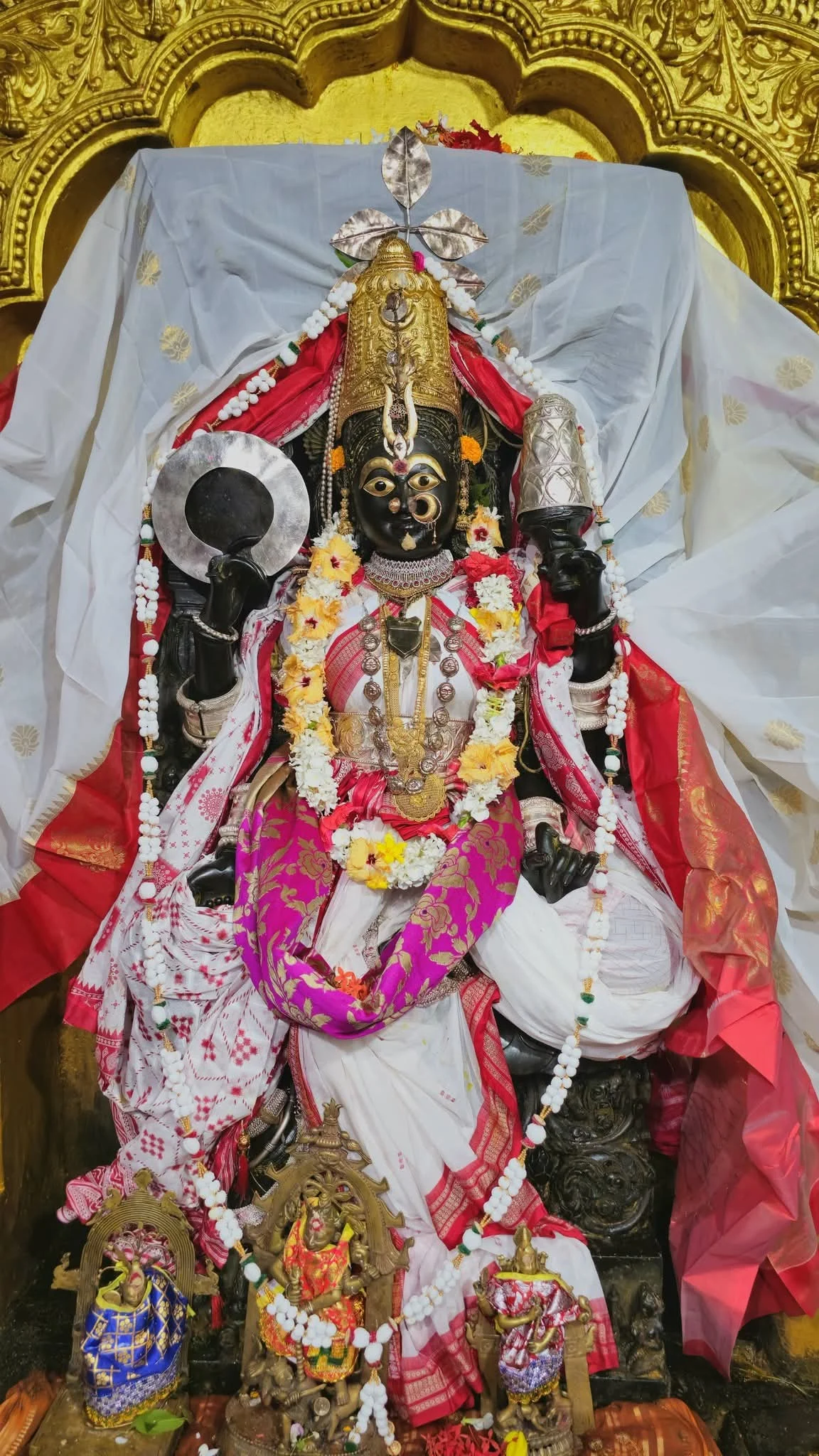
Maa Mangala has an important link with Jagannath cult. During “Navakalebara” of Mahaprabhu Jagannath , Mangala plays an important role.During Joda Ashadha month ( as per lunar calendar) , Daita Servitors of Mahaprabhu Jagannath Temple proceed to kakatpur and lay prostrate in Maa Mangala temple to get the divine dream . Maa Mangala give darshan to the daita servitors in their dreams and as per instructions of Maa Mangala , daru (or neem tree) are located and identified and from which new idols of Jagannath, Balabhadra, Subhadra and Sudarshan are sculpted.

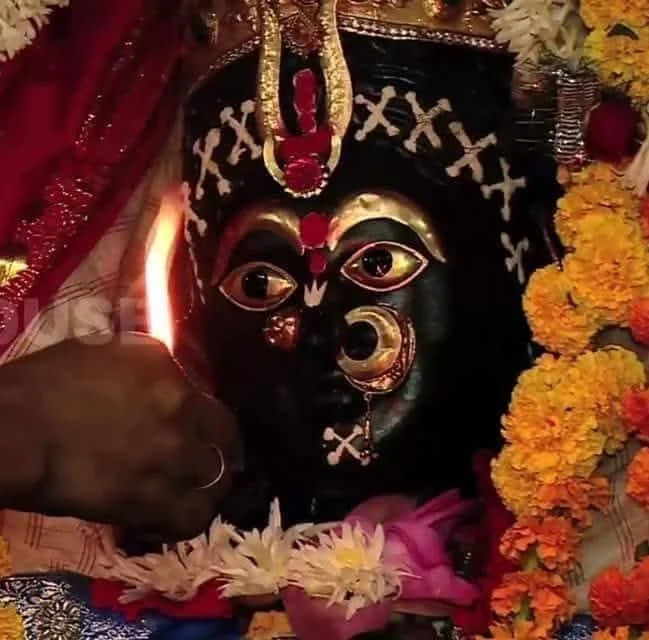
In his literary work “Chandi Puran,” Sarala Das puts a lot of emphasis on the Goddess Mangala. In it, he says that Maa Durga was in a fierce fight with the demon Mahishasura and during that time Maa Durga created Maa Mangala. Maa Mangala told Maa Durga to shed her clothes so that she could defeat the demon. Hence Maa Mangala is the diety of prosperity and happiness and specially worshipped by the women community predominantly. During ” Khudurukuni Osha” , the young and unmarried girls worship Maa Mangala .

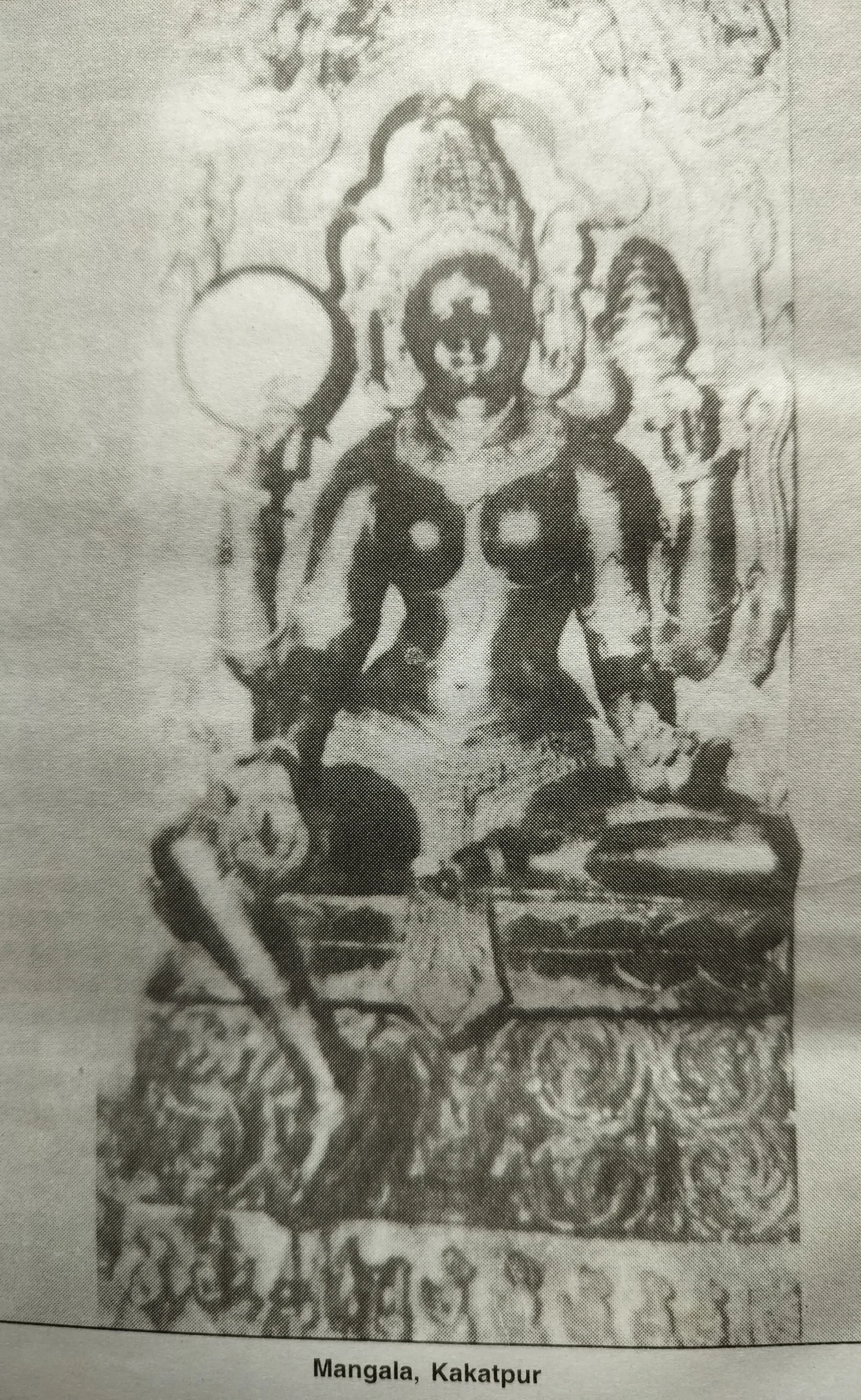
The present temple complex is comprised of a shrine, Jagamohan, and Natamandapa within a large compound surrounded by a high masonry wall. It was built on top of the ruins of an earlier temple. The excellent statue of Maa Mangala was kept hidden under water in the Prachi river for safety after the original Mangala shrine was destroyed during Muslim rule over Orissa. Between the years 1844 to 1865 A.D., a wealthy jamindar from the area constructed the temple that we see today.
The outer niches of this shrine are set with figures of Madhava, Vishnu, Barah and Trivikrama Vishnu. A Chamunda image ( Referred as Maa Dakshina Chandi) is however fixed to the southern wall of the temple . The Madhava image of the northern side is a remarkable piece of Ganga art. Madhav images are abundantly available in Prachi valley. The presiding idol of goddess Mangala is found sitting on a lotus pedestal in lalitasana posture. The four hands of the deity display a full moon, rosary, lotus and varadamudra. Within the Jagamohan there are several stone idols of Chamunda , mahishasuramardini Durga and Ganesha are found . They possibly belong to the original temple of the place. The lintel over the entrance door is set with Navagraha slab. In addition, a huge brass bell is seen preserved in the temple premises. The parshwadevatas of the temple are Vishnu , Baraha, Narasimha and Chamunda . Of these images only Chamunda belongs to Shaktism while other 3 images belong to Vaishnavism. A large block of stone is preserved in the premises which is believed to have been used by goddess Mangala as a resting place during midnight when she returns from Puri after attending Mahaprabhu Jagannath.
Earlier animal sacrifice used to take place inside the temple premises on occasion of Durga Puja and Jhamu Yatra. However with the influence of the Jagannath cult , Goddess Mangala is being worshipped as Param Vaishnavi . Hence animals sacrificed inside the temple has been stopped since long.
Maa Mangala’s emergence is obscured in so many mystery. It is believed that Maa Mangala was the village goddess of mangalapur , a nearby village of kakatpur. During the attack of Kalapahad, the devotees had kept her secretly in the river Prachi . One Sadhaba, or maritime trader, found her after many years and placed her on the Prachi Riverbank, where the current Temple stands. Another version is that the idol of Maa Mangala has been imported from Srilanka . Odisha had maritime trade relationship with Srilanka and the river Prachi was the principal trade route. A trader named ‘ Dadhibaman’ had brought the idol of Maa Mangala from the island and had placed her on the river bank in a temple. Some believe Maa Mangala to be ” Tara” of the Buddhist pantheon.
MARITIME GODS AND GODDESSES
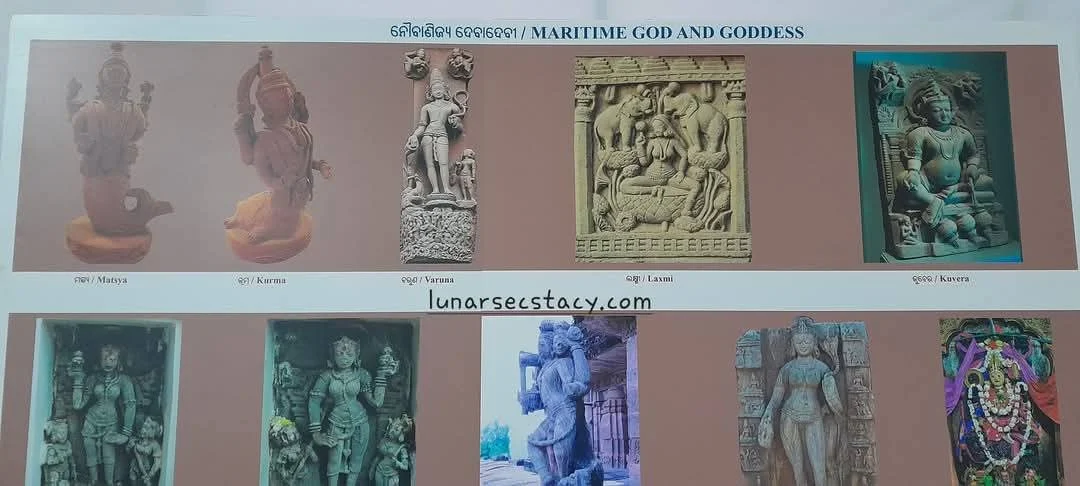

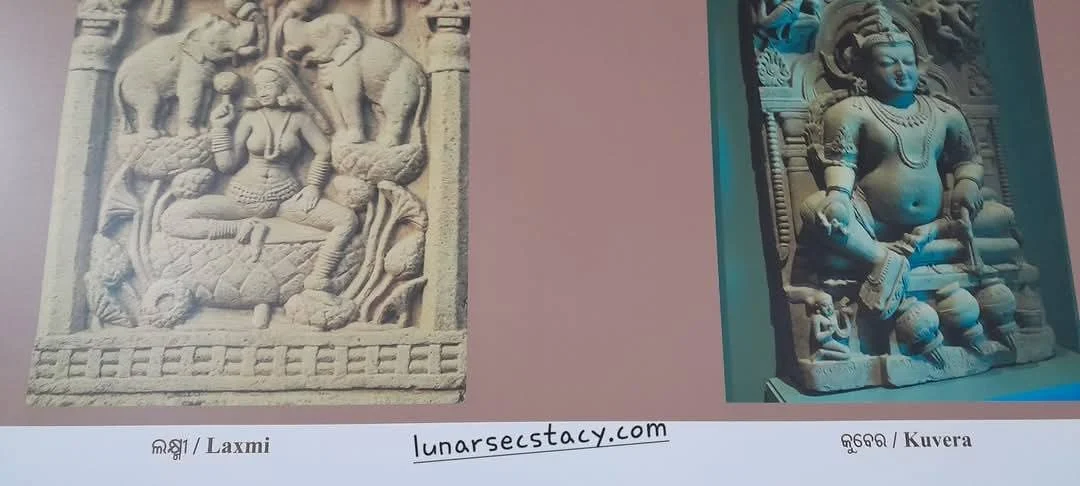
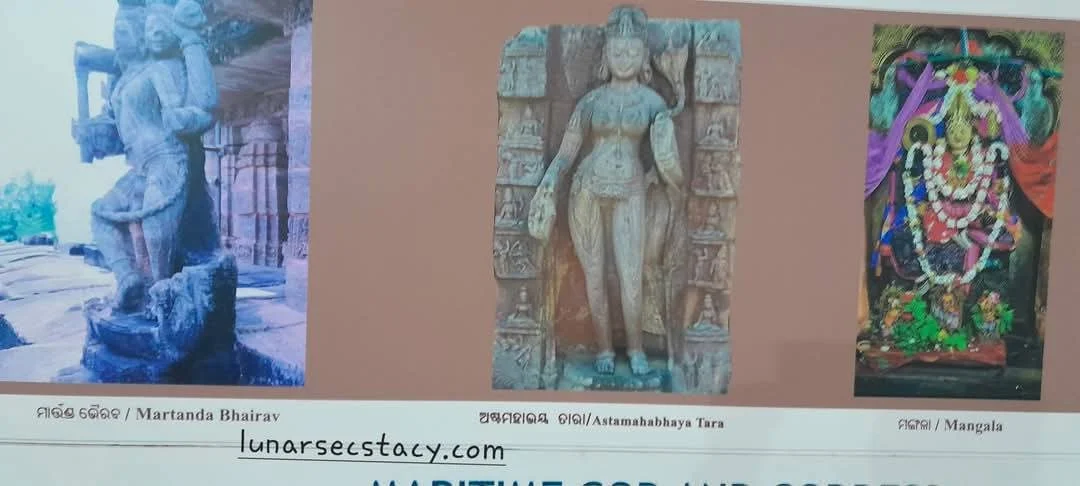


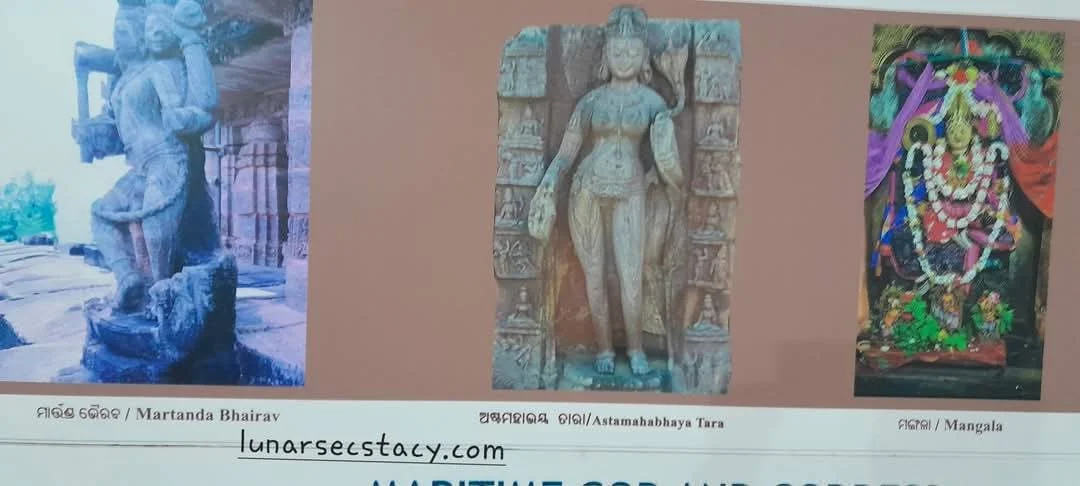
Images of Goddesses smeared with vermilion are seen often at every confluence of rivers and along the coast of Odisha as believed that they would protect the sailing ships . The Fisherman communities in Kakatpur, Nimapada ,Satyabadi, Khurda and Banapur areas of Puri district perform the Chaiti Ghoda dance on the Full-moon day of Chaitra. The community worships the goddess Basuli who is believed to have the head of a horse. The horse dance thus becomes a necessary part of their invocation to the goddess. In local legends, the deity, often associated with navigation is also especially in her aspect of Mangala or occasionally Kali/Chamunda. In Balasore town, the goddess Nimkali, who stands at the heart of the city, was especially worshiped by sailors and ship merchants who offer their Puja before setting out for sea trade. Even in the interior of Odisha, various goddesses are worshiped in respect to protection of their ships during sea voyage. At Subarnapur a rock in the Mahanadi, representing goddess Lankesvari, is worshiped by the boatmen when passing through the gorge of the river. The image of Durga worshiped along coastal Odisha for safety in navigation . For example , the Ramachandi temple near Konark. Here few Goddesses across the state Odisha need special mention because of their status as popular maritime goddesses .1) Dhamarai (daughter of the sea) of Dhamara, an important port known form historical records and situated at the mouth of Vaitarani: 2) Pattamangala of Chhatrapada near Narendrapur: 3) Adi Mangala of Balikudi: 4) Kharakhai of Kasturikana: 5) Budhi-Basuli of Tentulida: 6) Dalesvari of Kandagoredi: and 7) Andhra Ghiri Thakurani of Bantalapur. Boatmen plying in Chilka lake, on the other hand, enlist the aid of the goddess Kalijai, the presiding deity enshrined in a temple on an island inside the lake. They believe that she is a very benevolent goddess and saves anyone who asks for her help during sea travel through the chilika mouth.These deities are worshiped by the people of Odisha associated with maritime trade and commerce.
For having a detailed understanding regarding the rich & vibrant maritime trade of Kalingan people, please go through the following article
For further details about several other intriguing facts , you may go through the following article on Prachi valley civilisation.
Dr Manoj Mishra
